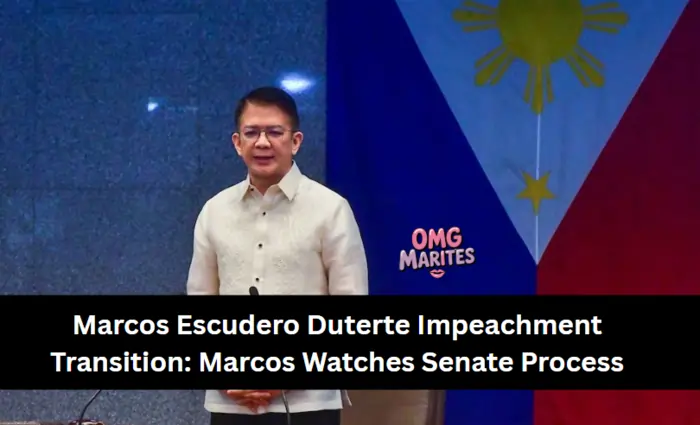President Ferdinand Marcos Jr. has expressed that he is “watching” how Senate President Francis “Chiz” Escudero manages the Duterte impeachment transition as the impeachment trial of Vice President Sara Duterte moves from the House of Representatives to the Senate. Marcos emphasized that this is primarily a function of the Senate and that he would not interfere in the proceedings.

Marcos’ Stance on the Impeachment Process
In an interview, President Marcos shared that the impeachment process, which has already been in the Senate for a few months, should proceed without any disruptions. He pointed out that it was clear that the trial would not be completed before the new senators assume office, highlighting the need for a smooth transition as the current Congress prepares to close.
Escudero’s Role in the Impeachment Transition
Senate President Escudero, who was sworn in as the presiding officer of the impeachment court on Monday, is tasked with ensuring the transition goes as peacefully as possible. However, Senator Joel Villanueva clarified that while the Senate is preparing to convene as an impeachment court, it has not officially started the trial.
Marcos’ Previous Statements on the Impeachment Process
In a previous BBM Podcast episode on May 19, Marcos stated that the impeachment process was beyond his control, and the Senate should handle the matter. He reiterated that once the impeachment complaint was filed, it was the responsibility of the Senate and the House of Representatives to move forward with it.
Looking Ahead: Smooth Transition and Senate Decisions
As the Senate prepares to handle the impeachment of Vice President Sara Duterte, Marcos is staying neutral and observing how Escudero leads the process to ensure a smooth handover from one Congress to the next. The outcome of the impeachment trial remains in the hands of the Senate, with Marcos continuing to emphasize his non-interference stance.
References:
- PAGASA Press Release, February 19, 2025
- INQUIRER.net – Ryan Leaogo, “Marcos ‘watching’ Escudero on Duterte trial transition to next Congress,”

Maria Theresa Mondragon, better known online as Antie Marites, is a 33-year-old Filipina content creator who’s turning “chismis” into credible news and meaningful conversation.
With a knack for storytelling and a passion for public service updates, Antie Marites creates relatable, informative, and bite-sized news content for the digital Pinoy. Whether it’s trending headlines, government announcements, or everyday life in the Philippines, she breaks it down in a way that’s clear, fun, and easy to understand—no filter, no fake news.
She’s the tita who sips her kape while scrolling DBM updates and turns it into your next viral TikTok.She’s also your go-to source for “real talk sa real-time news.”
Follow her journey and daily chika on:
📲 Facebook: OMGMarites
📱 TikTok: @omgmarites2025
